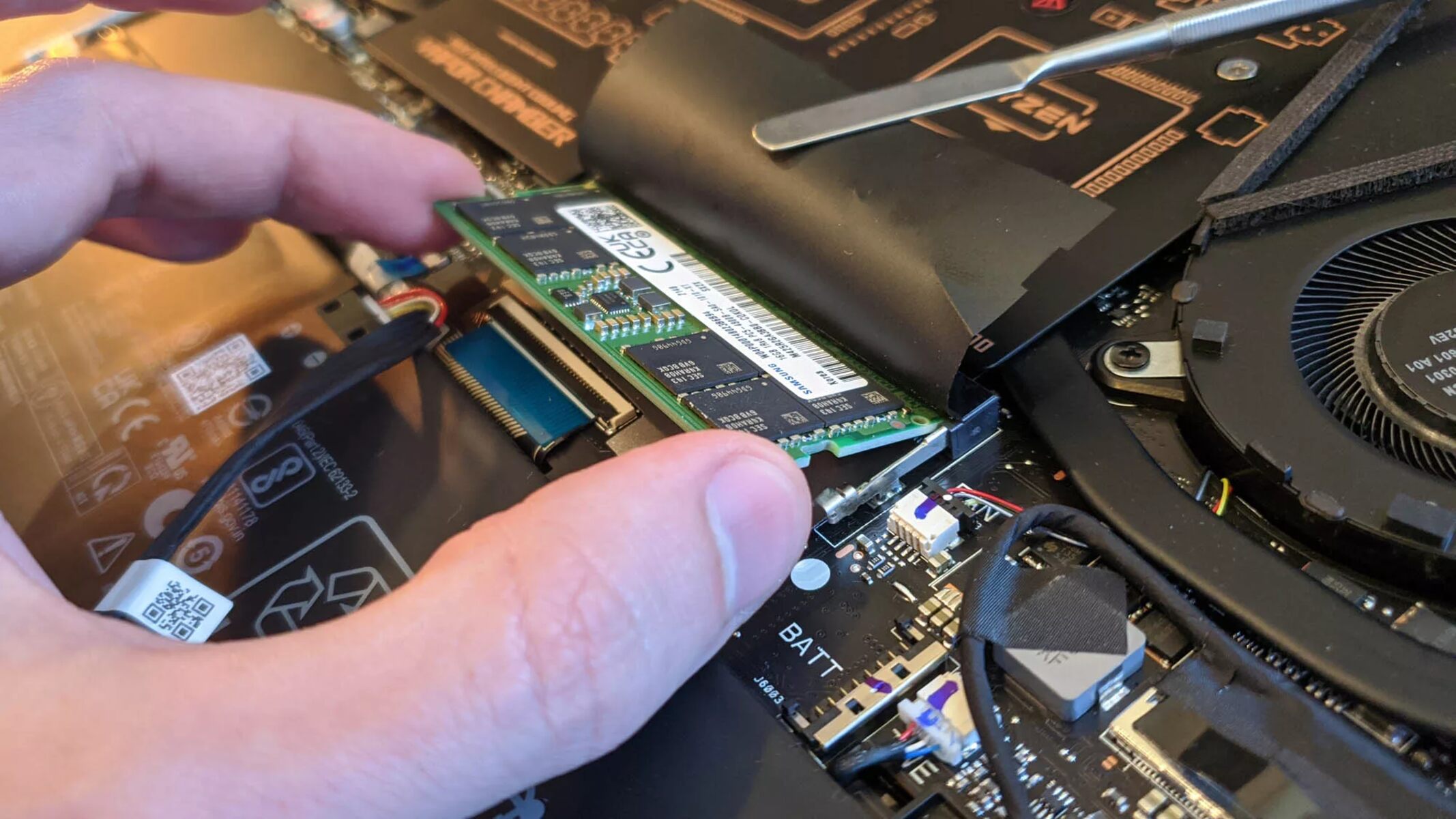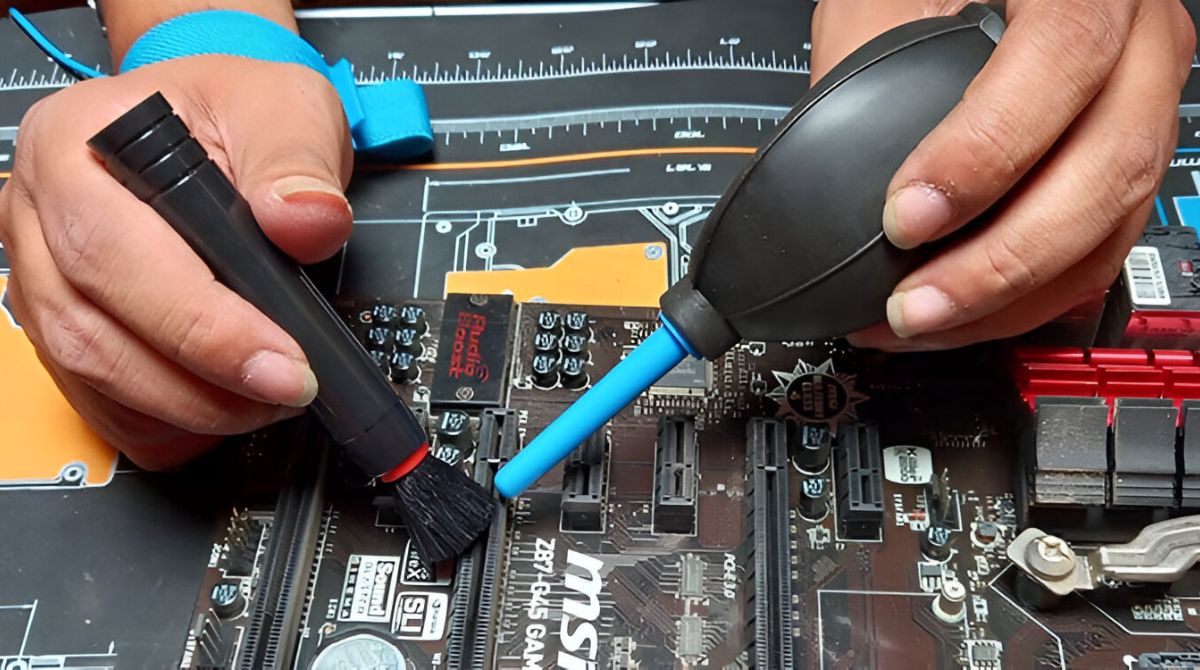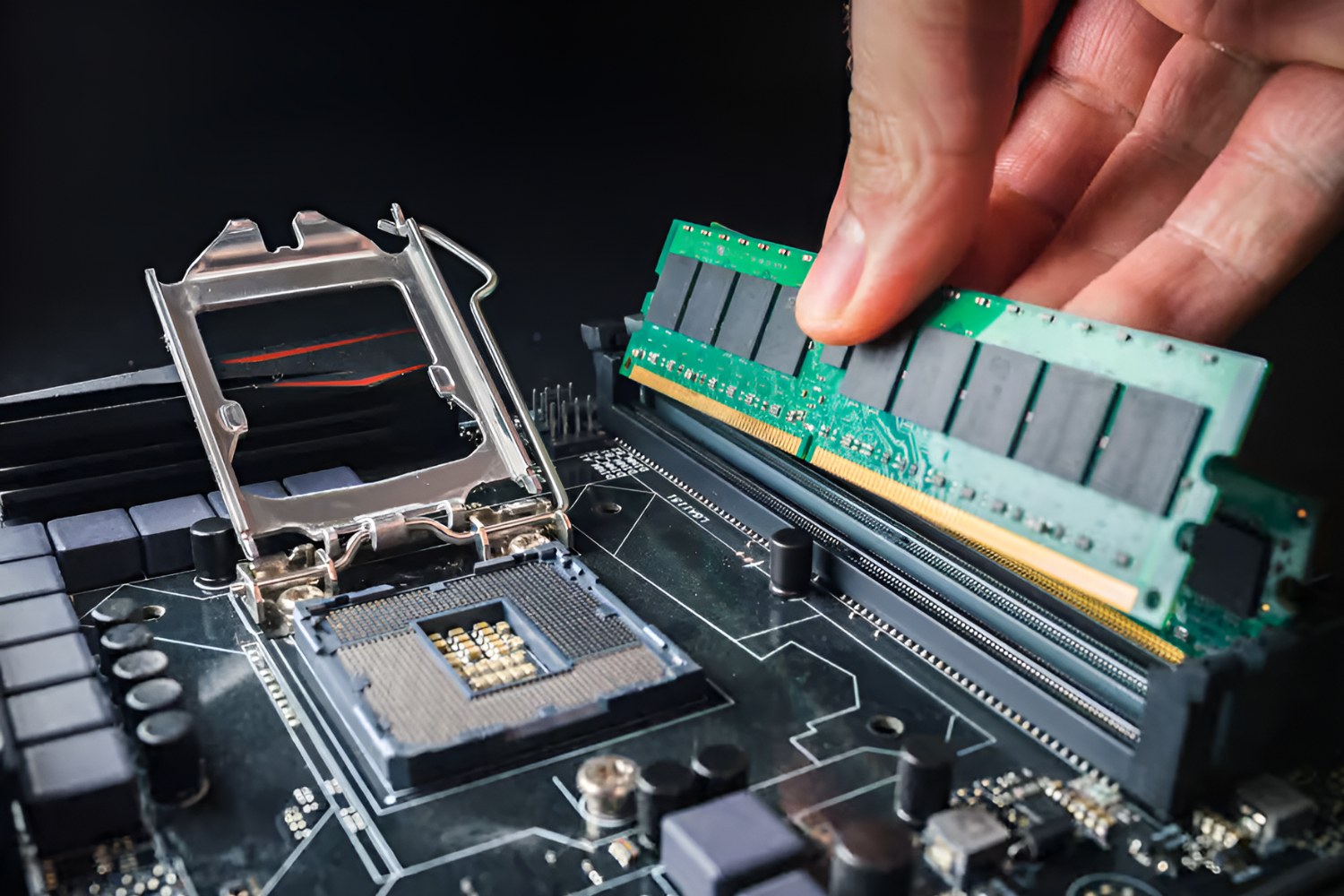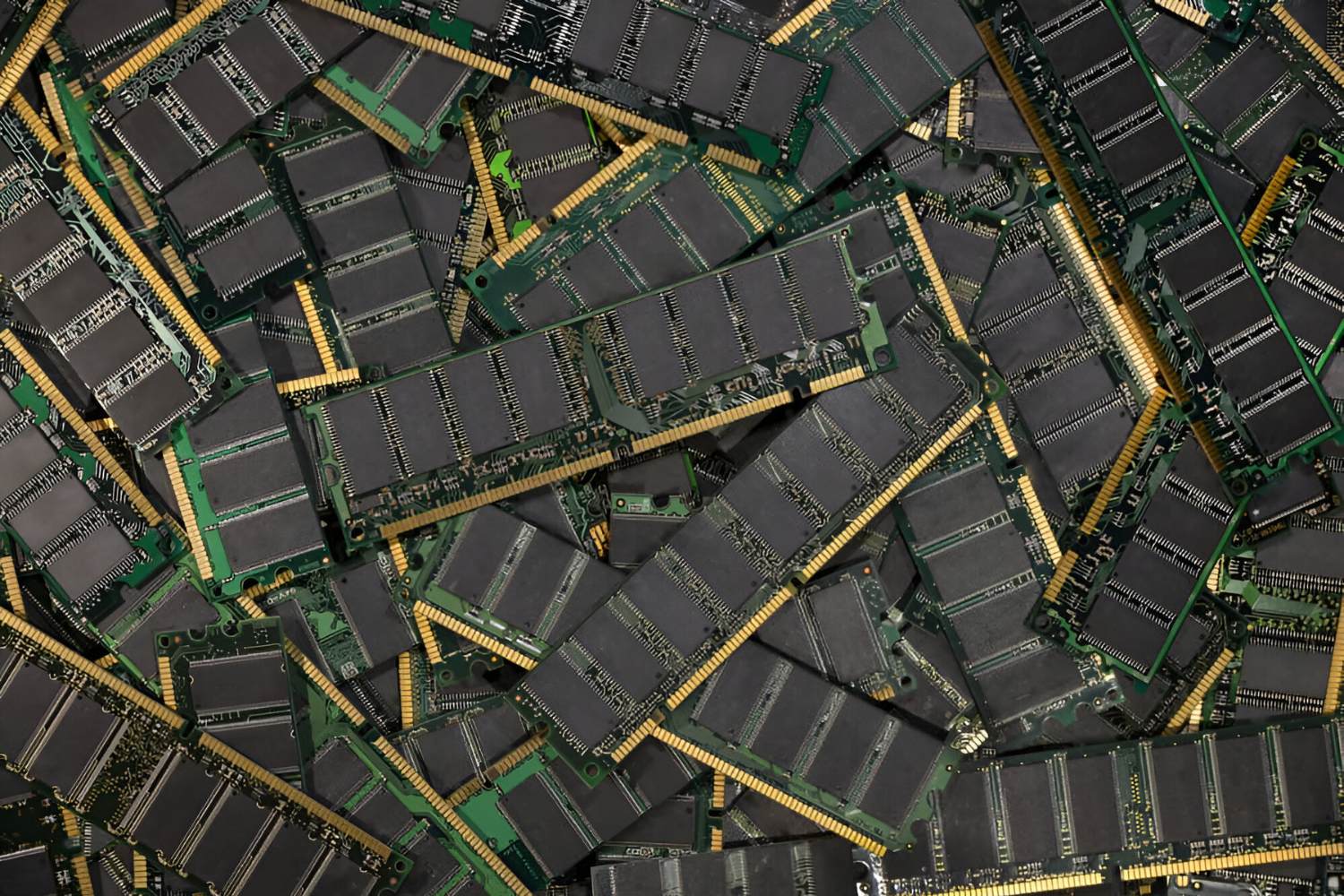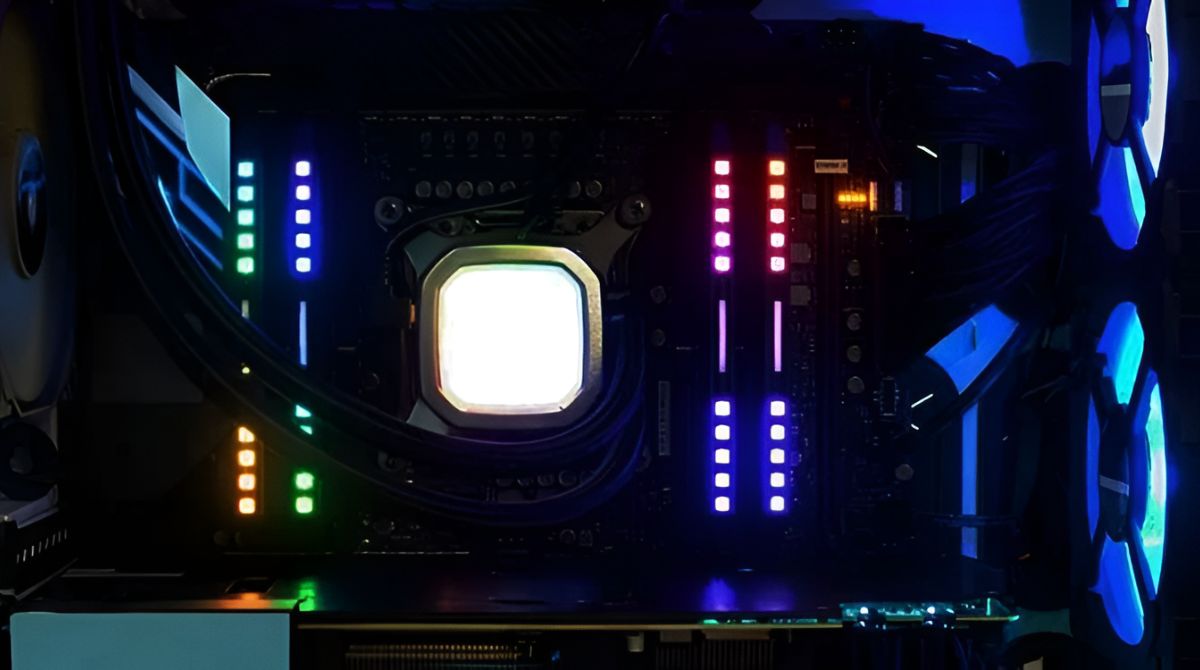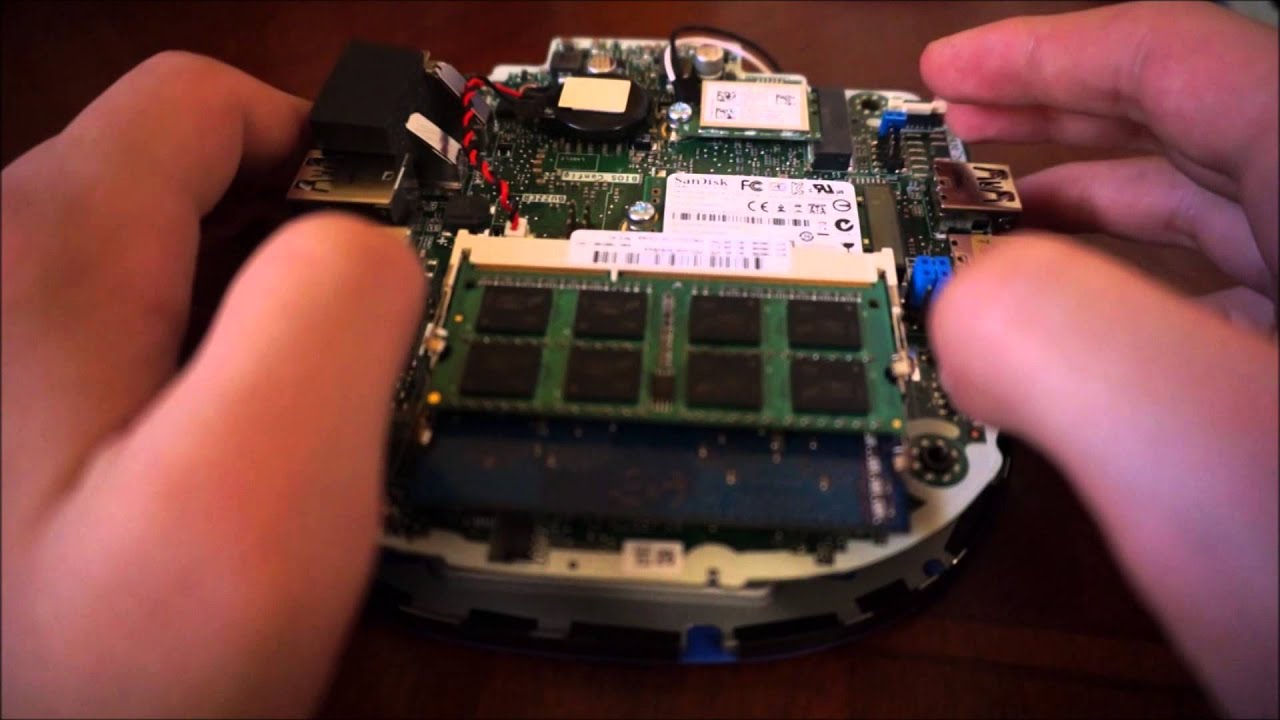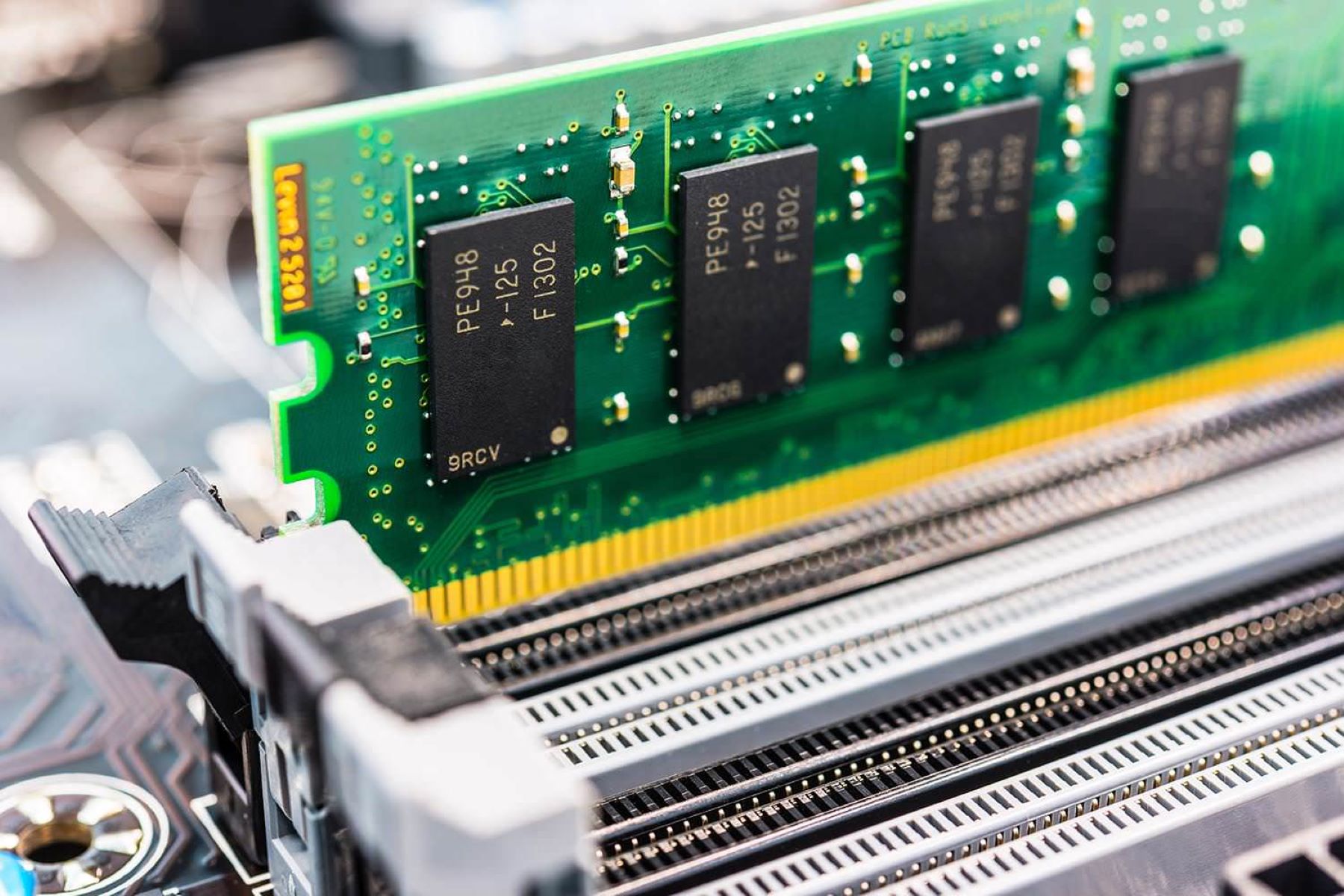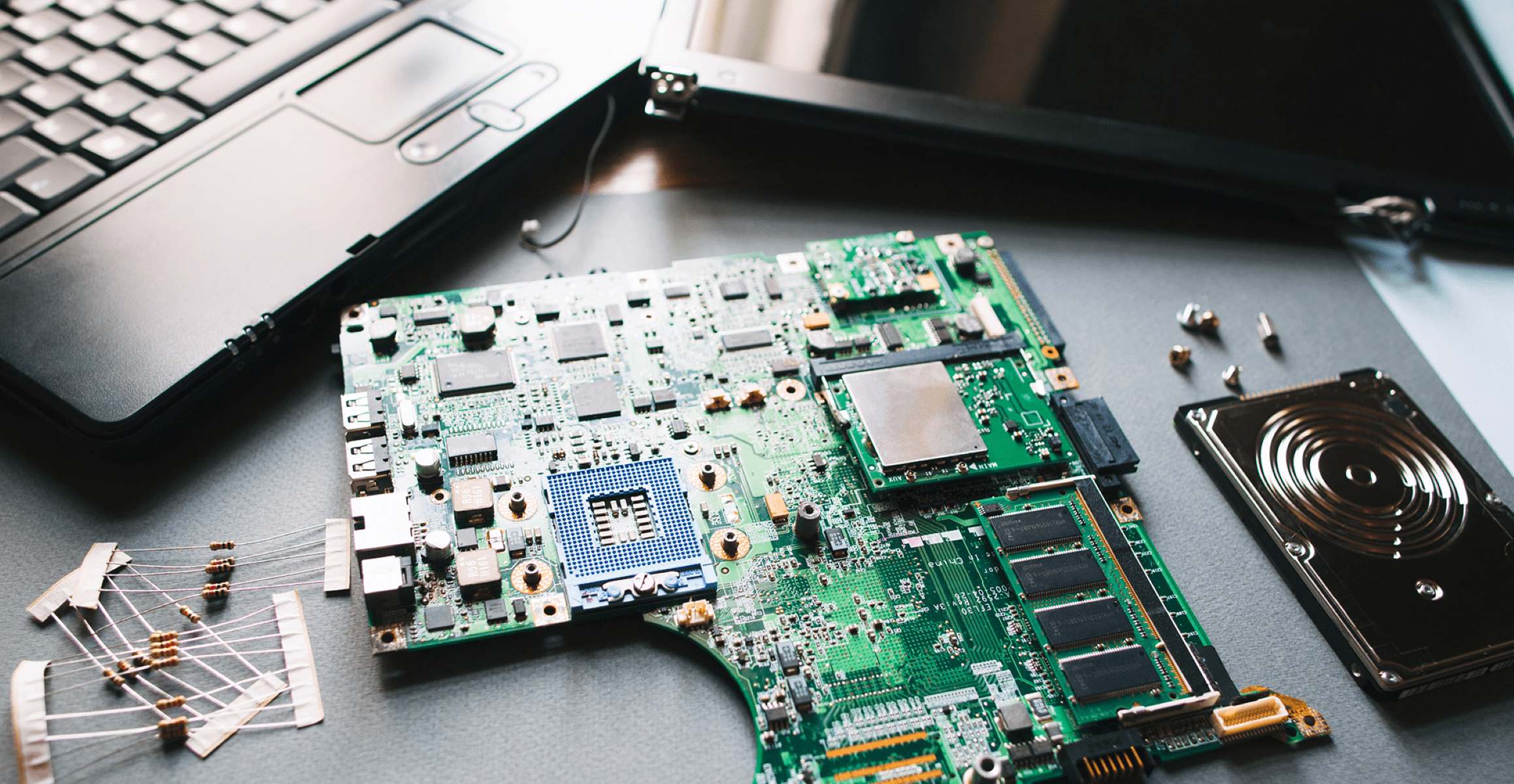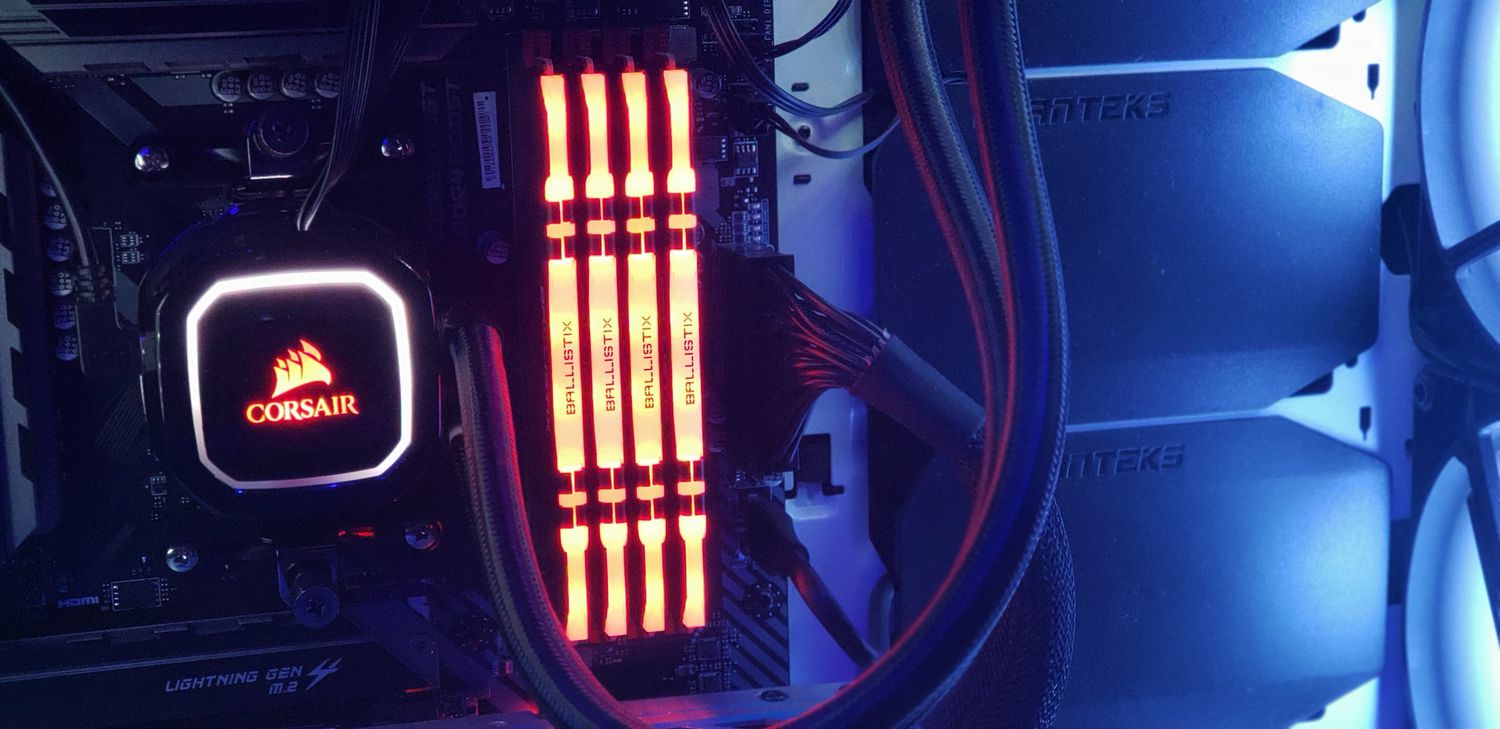Introduction
Having a faulty RAM slot can be frustrating, especially when it affects the performance and stability of your computer. RAM (Random Access Memory) is an essential component that enables your system to run smoothly and efficiently by temporarily storing data that your CPU needs to access quickly. When a RAM slot stops working correctly, it can lead to system crashes, slow performance, and even data loss.
There are several potential reasons why a RAM slot may stop working, including physical damage, dust buildup, or even compatibility issues. It is crucial to identify the root cause and take appropriate measures to fix the problem in order to restore the functionality of your RAM slot.
In this article, we will explore the common causes of a faulty RAM slot and discuss various solutions to address the issue. Whether you are a seasoned computer enthusiast or a novice user, this guide will provide you with the necessary steps to troubleshoot and resolve RAM slot problems.
Please note that attempting to fix a RAM slot requires some technical knowledge, so if you are not comfortable working with computer hardware, it is advisable to seek professional assistance. With that said, let’s dive into the common causes and solutions for fixing a faulty RAM slot.
Common Causes of RAM Slot Not Working
When your RAM slot stops working, it can be attributed to several common causes. Understanding these causes will help you narrow down the issue and find an appropriate solution. Here are some of the most common causes of RAM slot problems:
1. Dust and debris: Over time, dust and debris can accumulate inside your computer, including the RAM slots. This buildup can interfere with the connection between the RAM stick and the slot, causing it to malfunction.
2. Physical damage: Physical damage to the RAM slot, such as bent pins or a loose connection, can prevent it from functioning correctly. This can occur when inserting or removing the RAM stick without proper care, or due to mishandling of the computer.
3. Compatibility issues: Occasionally, RAM sticks may not be compatible with the motherboard or the specific RAM slot. This can result in compatibility conflicts, causing the slot to fail to recognize the RAM stick or limiting its functionality.
4. BIOS and driver issues: Outdated or incompatible BIOS firmware and drivers can cause conflicts with the RAM slot, resulting in it not working correctly. Keeping your system updated can help resolve these compatibility issues.
5. Electrical problems: Faulty power supply or voltage irregularities can impact the functioning of the RAM slot. Inconsistent power supply can result in intermittent connection issues or damage to the slot itself.
It’s important to note that these are just a few of the common causes of a non-functioning RAM slot. Identifying the specific cause will require troubleshooting and careful examination of your computer’s hardware and software components. The next section will outline how to identify a faulty RAM slot and perform some initial troubleshooting steps.
How to Identify a Faulty RAM Slot
Before attempting to fix a faulty RAM slot, it is crucial to correctly identify which slot is causing the issue. Here are some steps you can follow to determine if a RAM slot is not working:
1. Test each RAM slot individually: Remove all the RAM sticks from your computer and insert only one stick into a specific slot. Power on your computer and check if it successfully boots up. Repeat this process for each RAM slot to see if any particular slot causes startup issues or system instability.
2. Swap RAM sticks: If you have multiple RAM sticks, try swapping them between different slots. This will help determine if the problem lies with a specific RAM stick or the slot itself. If a specific RAM stick only works in certain slots but not in others, it may indicate a faulty slot.
3. Use diagnostic tools: There are several diagnostic tools available that can help identify faulty RAM slots. MemTest86 is one such popular tool that can thoroughly test the reliability and performance of each RAM slot individually. Running these diagnostic tests can provide valuable insights into the condition of your RAM slots.
4. Monitor system performance: Keep an eye on your computer’s performance and stability. If you experience regular system crashes, frequent freezes, or unexpected restarts, it could be an indication of a faulty RAM slot. However, it’s important to rule out other potential causes, such as software conflicts or driver issues, before concluding that the RAM slot is the problem.
5. Professional assessment: If you are unsure about identifying a faulty RAM slot or lack the technical expertise, it is recommended to seek professional assistance. Computer technicians have the necessary tools and knowledge to diagnose hardware issues accurately and provide appropriate solutions.
Remember, each computer system is unique, and the troubleshooting steps may vary depending on the specific hardware and software configurations. Once you have identified a faulty RAM slot, you can proceed with the appropriate solution to fix the issue, as discussed in the following sections.
Potential Solutions for Fixing a Faulty RAM Slot
When dealing with a faulty RAM slot, there are several potential solutions you can try to resolve the issue. Here are some of the most effective solutions:
1. Clean the RAM slot: Dust and debris can cause poor contact between the RAM stick and the slot. Use compressed air or a soft brush to clean the slot and remove any accumulated dust. Be gentle while cleaning to avoid damaging the pins or other components.
2. Try a different RAM stick: If you suspect that the RAM stick itself is faulty, try using a different RAM stick in the problematic slot. This will help determine if the issue lies with the slot or the RAM stick. Ensure that the replacement RAM stick is compatible with both the motherboard and the slot.
3. Reseat the RAM stick: Remove the RAM stick from the faulty slot and reinsert it. Make sure it is securely seated in the slot, with the locking mechanism fully engaged. Sometimes, a loose connection can cause the RAM slot to stop working properly.
4. Update BIOS and drivers: Outdated or incompatible BIOS firmware and drivers can lead to RAM slot issues. Visit the manufacturer’s website and check for any available updates for the motherboard BIOS and related drivers. Install the updates according to the provided instructions and restart your computer.
5. Check for physical damage: Inspect the RAM slot for any physical damage, such as bent pins or signs of corrosion. Use a magnifying glass if necessary. If you notice any damage, carefully attempt to straighten bent pins using a non-conductive tool. However, if the damage is severe or beyond your expertise, it is best to consult a professional.
6. Get professional help: If all else fails or if you are uncomfortable performing hardware-related tasks, it may be time to seek professional assistance. Experienced computer technicians can diagnose the issue more accurately and offer appropriate repair options.
Remember, not all RAM slot issues can be fixed, especially if the slot is severely damaged. In such cases, you may need to consider alternative options, such as replacing the motherboard or upgrading your computer’s hardware.
Keep in mind that tinkering with computer hardware carries some risk, so exercise caution and follow proper safety measures during any troubleshooting or repair process. It is always wise to back up your important data before making any hardware changes to avoid potential data loss.
Now that we have discussed potential solutions for fixing a faulty RAM slot, you are equipped with the knowledge to tackle this issue. Choose the solution that seems most appropriate for your situation and proceed accordingly.
Solution 1: Clean the RAM Slot
One of the most common causes of a faulty RAM slot is the accumulation of dust and debris. Over time, these particles can interfere with the contact between the RAM stick and the slot, leading to connectivity issues. Cleaning the RAM slot can often resolve this problem. Here’s how you can clean the RAM slot:
1. Shut down your computer: Before cleaning the RAM slot, make sure your computer is powered off and unplugged. This will ensure your safety and prevent any potential damage to the hardware.
2. Gather cleaning supplies: You will need compressed air and/or a soft bristle brush to remove the dust and debris from the RAM slot. Compressed air cans are widely available and can be purchased at electronic stores or online.
3. Gently blow out the dust: Use the compressed air can to blow out the dust from the RAM slot. Start by aiming the nozzle at an angle and blow the air into the slot to dislodge any debris. Be careful not to use excessive pressure, as this could damage the delicate components.
4. Brush away remaining debris: If there are any stubborn particles remaining in the RAM slot, use a soft bristle brush to gently brush them away. Again, be cautious not to apply too much pressure or touch the delicate pins with the brush.
5. Inspect for cleanliness: After cleaning, visually inspect the RAM slot to ensure that it is free from dust and debris. Use a flashlight if needed to get a better view. The slot should appear clean and the pins should be straight and undamaged.
6. Reinstall the RAM stick: Once you are satisfied with the cleanliness of the RAM slot, carefully reinsert the RAM stick. Ensure that it is properly aligned and fully seated in the slot. Secure it in place by gently pushing down until the retaining clips snap into position.
7. Power on your computer: Reconnect the power cable to your computer and power it on. Verify if the RAM slot is now functioning correctly. Monitor the system for any improvements in performance or stability.
Regularly cleaning the RAM slot, along with other internal components, can help prevent future issues and extend the lifespan of your computer. Aim to clean your computer’s interior annually or more frequently if you notice the buildup of dust and debris.
If cleaning the RAM slot does not resolve the issue, you may need to consider other solutions such as trying a different RAM stick or seeking professional assistance.
Now that you know how to clean a RAM slot, go ahead and give it a try if you suspect that dust or debris is causing the malfunction.
Solution 2: Try a Different RAM Stick
If you suspect that the RAM stick itself may be faulty, a potential solution is to try using a different RAM stick in the problematic slot. This will help determine if the issue lies with the RAM stick or the slot itself. Here’s how you can try a different RAM stick:
1. Power off your computer: Before proceeding, ensure that your computer is powered off and unplugged. This will protect you from any electric shock and prevent any damage to the hardware.
2. Identify a compatible RAM stick: Find a RAM stick that is compatible with your computer’s motherboard and matches the specifications of the faulty RAM stick. Refer to your computer’s manual or search for the motherboard model to determine the supported RAM types and capacities.
3. Locate the faulty RAM stick: Identify the RAM stick that is inserted in the faulty slot. Gently press the retaining clips on each end of the slot to release the RAM stick. Carefully pull it out of the slot.
4. Insert the replacement RAM stick: Take the different RAM stick and align it with the slot. Ensure that it is inserted at the correct angle and fully seated in the slot. Apply gentle pressure on both ends until the retaining clips snap into place to secure the RAM stick.
5. Power on your computer: Reconnect the power cable and turn on your computer. Allow the operating system to boot up and perform any necessary startup tasks. Monitor the system for any improvements in performance or stability.
If the computer functions properly with the different RAM stick in the faulty slot, it indicates that the original RAM stick may be defective. In this case, you may need to replace the faulty RAM stick with a new one that matches your computer’s specifications.
However, if the computer still experiences issues or does not function correctly even with the different RAM stick, it suggests that the actual RAM slot itself may be the problem. In such cases, you may need to explore other solutions or seek professional assistance to address the faulty RAM slot.
Remember to handle RAM sticks with care, as they are sensitive electronic components. Avoid touching the golden pins and always store them in their protective packaging when not in use.
Now that you know how to try a different RAM stick, you can determine if the issue lies with the RAM stick or the slot itself. Give this solution a try and see if it resolves the problem you’re facing with your RAM slot.
Solution 3: Reseat the RAM Stick
If you are experiencing issues with a RAM slot, another potential solution is to reseat the RAM stick. Sometimes, a loose connection can cause the RAM slot to stop working properly. Reseating the RAM stick can help establish a secure and reliable connection. Here’s how you can reseat the RAM stick:
1. Power off your computer: Before proceeding, ensure that your computer is powered off and unplugged. This will protect you from any electric shock and prevent any damage to the hardware.
2. Locate the RAM stick: Identify the RAM stick that is inserted in the problematic slot. Gently press the retaining clips on each end of the slot to release the RAM stick. Carefully pull it out of the slot.
3. Inspect the RAM stick: Check the RAM stick for any signs of damage or debris. If you notice any issues, such as bent pins or dirt buildup, clean or address them accordingly. Ensure the connectors on the RAM stick are clean and free from debris.
4. Align and insert the RAM stick: Align the RAM stick with the slot by matching the notch on the stick with the slot’s key. Insert the RAM stick at a slight angle, ensuring that it is fully seated in the slot. Press down gently but firmly on both ends of the stick until the retaining clips snap into place.
5. Power on your computer: Reconnect the power cable and turn on your computer. Allow the operating system to boot up and perform any necessary startup tasks. Monitor the system for any improvements in performance or stability.
In some cases, simply reseating the RAM stick can resolve connectivity issues and restore the functionality of a RAM slot. The act of removing and reinserting the stick helps ensure a proper and secure connection between the RAM stick and the slot.
If the issue persists after reseating the RAM stick, you may need to delve deeper and try other solutions or seek professional assistance to address the faulty RAM slot.
Remember to handle RAM sticks with care, avoiding touching the golden pins and storing them in their protective packaging when not in use.
Now that you know how to reseat a RAM stick, you can give it a try if you suspect a loose connection is causing the problem. It’s a simple yet effective solution that may help resolve your RAM slot issue.
Solution 4: Update BIOS and Drivers
Outdated or incompatible BIOS firmware and drivers can cause conflicts with the RAM slot and lead to functionality issues. Updating the BIOS (Basic Input/Output System) firmware and relevant drivers can resolve compatibility conflicts and improve the performance of the RAM slot. Here’s how you can update the BIOS and drivers:
1. Identify your motherboard model: Determine the make and model of your motherboard. You can usually find this information in the system specifications or by opening your computer and looking for the model number printed on the motherboard itself.
2. Visit the manufacturer’s website: Go to the website of your motherboard’s manufacturer and locate the support or downloads section. Look for the latest BIOS firmware update and driver updates for your specific motherboard model.
3. Read the instructions: Carefully read the instructions provided by the manufacturer on how to update the BIOS and drivers. Follow the step-by-step guide to ensure a smooth and successful update process. Be sure to download the correct BIOS and drivers for your specific motherboard model.
4. Backup your data: Before proceeding with any system updates, it is always advisable to back up your important data. While updating the BIOS and drivers is generally safe, there is always a slight risk of data loss or system instability. Creating a backup ensures that your important files are protected.
5. Update the BIOS: Start by updating the BIOS firmware. Most motherboards have a built-in utility that allows you to update the BIOS directly from within the computer’s BIOS settings menu. Follow the provided instructions to initiate the update process. Alternatively, some motherboards may require you to create a bootable USB drive with the BIOS update file and restart the computer to perform the update.
6. Update drivers: Once you have updated the BIOS, proceed to update the relevant drivers for your motherboard. Download the latest drivers from the manufacturer’s website and follow the instructions to install them. This may include drivers for the chipset, audio, LAN, and other components that are essential for proper system functionality.
7. Restart your computer: After all the updates are installed, restart your computer to apply the changes. Allow the operating system to boot up and perform any necessary startup tasks. Monitor the system for any improvements in RAM slot performance or overall system stability.
Updating the BIOS and drivers can often resolve compatibility issues that may be affecting the RAM slot. However, it’s important to practice caution when updating the BIOS, as an incorrect update or interruption during the process can potentially render your system inoperable. Follow the manufacturer’s instructions carefully and double-check that you have the correct BIOS update for your specific motherboard model.
If updating the BIOS and drivers does not fix the RAM slot problem, further troubleshooting or professional assistance may be required.
Now that you know how to update the BIOS and drivers, you can proceed with this solution to address any compatibility conflicts that may be affecting the functionality of your RAM slot.
Solution 5: Check for Physical Damage
In some cases, physical damage to the RAM slot can cause it to stop functioning properly. It’s essential to inspect the slot for any signs of damage and address them accordingly. Here’s how you can check for physical damage in the RAM slot:
1. Power off your computer: Before proceeding, ensure that your computer is powered off and unplugged. This will protect you from any electric shock and prevent any damage to the hardware.
2. Locate the RAM slot: Identify the RAM slot that is causing the issue. Gently press the retaining clips on each end of the slot to release the RAM stick. Carefully inspect the slot for any signs of physical damage.
3. Look for bent pins: Examine the pins inside the slot for any signs of bending. Bent pins can prevent proper contact between the RAM stick and the slot, resulting in functionality issues. If you notice any bent pins, you can attempt to straighten them using a non-conductive tool, such as a plastic toothpick or a mechanical pencil without lead.
4. Check for corrosion or dirt: Look for any signs of corrosion or dirt buildup in the slot. Corrosion can affect the electrical connection, while dirt can obstruct the contact between the RAM stick and the slot. If you notice any corrosion or dirt, clean the slot by gently wiping it with a soft, lint-free cloth or using compressed air to blow out the debris.
5. Verify secure connection: While inspecting, ensure that the RAM stick is securely seated in the slot. Check that the retaining clips are fully engaged and holding the RAM stick in place. A loose or improper connection can cause functionality issues.
6. Reinstall the RAM stick: After inspecting the slot, carefully reinsert the RAM stick. Make sure it is fully seated and that the retaining clips snap into place to secure the RAM stick properly.
7. Power on your computer: Reconnect the power cable and turn on your computer. Monitor the system for any improvements in RAM slot performance or overall system stability.
If you notice severe physical damage to the RAM slot, such as broken pins or extensive corrosion, it may require professional repair or even the replacement of the motherboard. In such cases, it is advisable to seek professional assistance to address the issue effectively.
Remember to handle RAM sticks and the RAM slot with care. Avoid applying excessive force and be gentle during the inspection and reinstallation process.
Checking for physical damage is an important step when troubleshooting a faulty RAM slot. If any issues are detected, addressing them promptly can potentially restore the functionality of the slot and ensure optimal system performance.
Now that you know how to check for physical damage, carefully examine your RAM slot and take necessary actions to resolve any issues you may find.
Solution 6: Get Professional Help
If you have tried the previous solutions and are still unable to fix the issue with your faulty RAM slot, it may be time to seek professional help. Professional technicians have the expertise and experience to diagnose and address hardware-related problems effectively. Here’s why getting professional help can be a viable solution:
1. Expert diagnosis: Computer technicians have the knowledge and tools necessary to accurately diagnose the cause of the problem. They can perform thorough tests and assessments to identify the specific issue with your RAM slot and provide appropriate solutions.
2. Specialized equipment: Professionals have access to specialized equipment that may not be readily available to the average computer user. These tools can aid in diagnosing and repairing hardware-related issues, ensuring a more precise and reliable solution.
3. Warranty considerations: If your computer or components are under warranty, attempting to fix the RAM slot yourself might void the warranty. Seeking professional assistance ensures that any repairs or replacements are carried out within the warranty terms, preserving your rights and coverage.
4. Time and cost-effectiveness: While DIY troubleshooting can be rewarding, it can also be time-consuming and potentially costly if mistakes are made. Professional technicians can save you time and money by efficiently resolving the issue with your RAM slot, minimizing downtime and avoiding potential additional expenses.
5. Complete system evaluation: When you involve a professional, they can conduct a comprehensive evaluation of your entire system. They can identify any other underlying issues that may be contributing to the RAM slot problem and propose suitable solutions to optimize your computer’s performance and stability.
It’s worth noting that seeking professional help comes with a cost, and it may not be necessary for all situations. However, if you are not comfortable working with hardware or if you have exhausted all other troubleshooting options, consulting a professional can provide peace of mind and ensure that the problem is resolved correctly.
Ensure that you choose a reputable computer repair service or technician with experience in hardware troubleshooting. Reading reviews, getting recommendations from trusted sources, and checking their certifications can help you make an informed decision.
Remember, prevention is always better than cure. To minimize the risk of future RAM slot issues, it’s crucial to practice good computer maintenance, keep your system clean, and follow safe handling procedures when installing or removing RAM sticks.
Now that you know the benefits of seeking professional help, if you are unable to fix the faulty RAM slot on your own, consider consulting a qualified technician who can provide the expertise and support you need to resolve the issue effectively.
Conclusion
A faulty RAM slot can cause significant disruptions to your computer’s performance and stability. However, with the solutions provided in this article, you can troubleshoot and address the issue effectively.
We explored common causes of RAM slot problems, such as dust buildup, physical damage, compatibility issues, outdated BIOS and drivers, and electrical problems. By understanding these causes, you can narrow down the problem and select appropriate solutions.
From cleaning the RAM slot to trying a different RAM stick, reseating the RAM stick, updating the BIOS and drivers, checking for physical damage, and seeking professional help, there are various steps you can take to fix a faulty RAM slot.
It’s important to proceed with caution and follow safety measures when dealing with computer hardware. Remember to power off your computer, back up your data, and handle RAM sticks and slots gently to prevent any damage.
If you are unable to resolve the issue on your own or lack the technical expertise, seeking professional help is a viable solution. Professional technicians can diagnose the problem accurately and offer appropriate repairs or replacements if necessary.
Now that you have a better understanding of how to identify and fix a faulty RAM slot, you can take the necessary steps to address this issue and restore the optimal functionality of your computer.
Remember, prevention is key. Regularly clean your computer to prevent dust buildup, handle RAM sticks and slots carefully, and keep your BIOS and drivers updated to minimize the risk of future RAM slot problems.
By following these guidelines and utilizing the solutions provided, you can overcome RAM slot issues and ensure the optimal performance and stability of your computer system.







